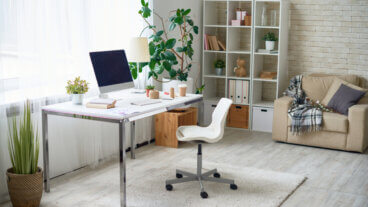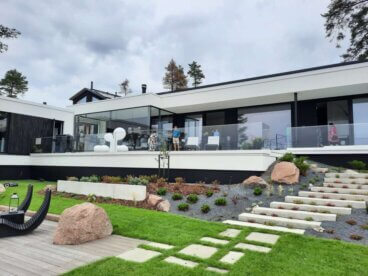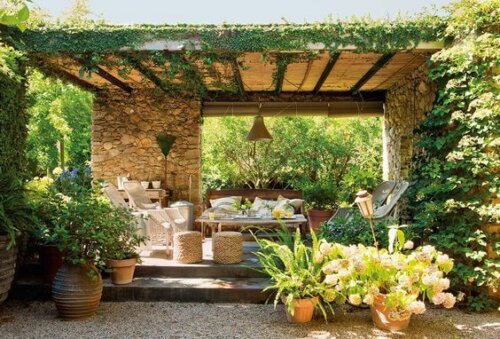How You Can Define a Decorative Style
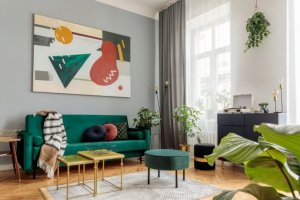
Making a space habitable so that your personal style is reflected in every detail is very important in transforming your house into a home. Before making any decision related to the decoration of the house, you need to consider what atmosphere you want to create. These aspects will help us define our style.
When choosing your decorative style, take into account the features of the space and its function. One of the factors that must be considered is where your home is located (country, beach, city), in addition to the climate of the area and the architecture.
In this search for a personal style, the decor should be a starting point. If you start decorating your home without taking this and aesthetics into account, chances are your home will become a chaotic space without personality.
Concepts that define a style
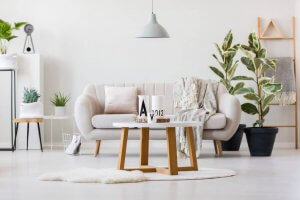
What is style?
Style is defined by following certain composition rules in the combination of decorative elements: the choice of certain colors, the preference for specific shapes and compositions, and the use of certain materials.
The classic, minimalist, ethnic, and rustic styles reflect a certain perception of architecture and decoration. They arose mainly due to the influence of artistic currents, cultural movements and ideologies, lifestyles, social customs, and technological advances.
The advantages of choosing to define a style
Style is not set in stone. It’s not something airtight and definitive that leaves no room for imagination. Instead, it acts as a general decorative framework. It facilitates the task of choosing the furniture, colors, and the rest of the elements that make up the environment.
Choosing from a wide range of ideas is as simple as letting yourself be guided by your aesthetic criteria.
Style and pragmatism
If you want a space where life unfolds with fluidity and comfort, the style must combine aesthetics and functionality. It’s important to consider who’s going to enjoy it so that the decorations adapt to your needs. As a general rule, we suggest you choose the same style for the entire home.
The importance of furniture to define a style

The personality of a piece of furniture comes from its material.
In addition to wood, which is still one of the most common materials, glass, metals, and natural products are also used. The main advantage of these other materials is that they tend to be visually lighter than wood.
The shapes and sizes of the furniture also help to convey a certain feeling. The following is important:
- The rooms of the house in which taller furniture prevails, such as glass cases or cabinets, offer a more formal and rigid appearance.
- With furniture and accessories where horizontal lines stand out (sofas with low backs, rectangular paintings, low tables) the room can be more spacious.
- To achieve a cozy atmosphere, combine high and low furniture, with a predominance of the latter.
- Sturdy furniture makes the room take on a solemn and heavy air, while lighter furniture gives off a feeling of informality.
The symbolic universe
In addition to its practical use and aesthetic aspect, furniture also has a representative value. It reflects the social prestige of its owners.
Furniture can evoke memories and arouse feelings. For example, placing a rocking chair in a corner of the living room creates a relaxing space with an informal air.
Play with creativity
You can use your creativity and play around with the furniture. A fun way to decorate is to place objects where they’re out of context. For example, put a jukebox from a diner in your living room.
Making a space habitable so that your personal style is reflected in every detail is very important in transforming your house into a home. Before making any decision related to the decoration of the house, you need to consider what atmosphere you want to create. These aspects will help us define our style.
When choosing your decorative style, take into account the features of the space and its function. One of the factors that must be considered is where your home is located (country, beach, city), in addition to the climate of the area and the architecture.
In this search for a personal style, the decor should be a starting point. If you start decorating your home without taking this and aesthetics into account, chances are your home will become a chaotic space without personality.
Concepts that define a style

What is style?
Style is defined by following certain composition rules in the combination of decorative elements: the choice of certain colors, the preference for specific shapes and compositions, and the use of certain materials.
The classic, minimalist, ethnic, and rustic styles reflect a certain perception of architecture and decoration. They arose mainly due to the influence of artistic currents, cultural movements and ideologies, lifestyles, social customs, and technological advances.
The advantages of choosing to define a style
Style is not set in stone. It’s not something airtight and definitive that leaves no room for imagination. Instead, it acts as a general decorative framework. It facilitates the task of choosing the furniture, colors, and the rest of the elements that make up the environment.
Choosing from a wide range of ideas is as simple as letting yourself be guided by your aesthetic criteria.
Style and pragmatism
If you want a space where life unfolds with fluidity and comfort, the style must combine aesthetics and functionality. It’s important to consider who’s going to enjoy it so that the decorations adapt to your needs. As a general rule, we suggest you choose the same style for the entire home.
The importance of furniture to define a style

The personality of a piece of furniture comes from its material.
In addition to wood, which is still one of the most common materials, glass, metals, and natural products are also used. The main advantage of these other materials is that they tend to be visually lighter than wood.
The shapes and sizes of the furniture also help to convey a certain feeling. The following is important:
- The rooms of the house in which taller furniture prevails, such as glass cases or cabinets, offer a more formal and rigid appearance.
- With furniture and accessories where horizontal lines stand out (sofas with low backs, rectangular paintings, low tables) the room can be more spacious.
- To achieve a cozy atmosphere, combine high and low furniture, with a predominance of the latter.
- Sturdy furniture makes the room take on a solemn and heavy air, while lighter furniture gives off a feeling of informality.
The symbolic universe
In addition to its practical use and aesthetic aspect, furniture also has a representative value. It reflects the social prestige of its owners.
Furniture can evoke memories and arouse feelings. For example, placing a rocking chair in a corner of the living room creates a relaxing space with an informal air.
Play with creativity
You can use your creativity and play around with the furniture. A fun way to decorate is to place objects where they’re out of context. For example, put a jukebox from a diner in your living room.
